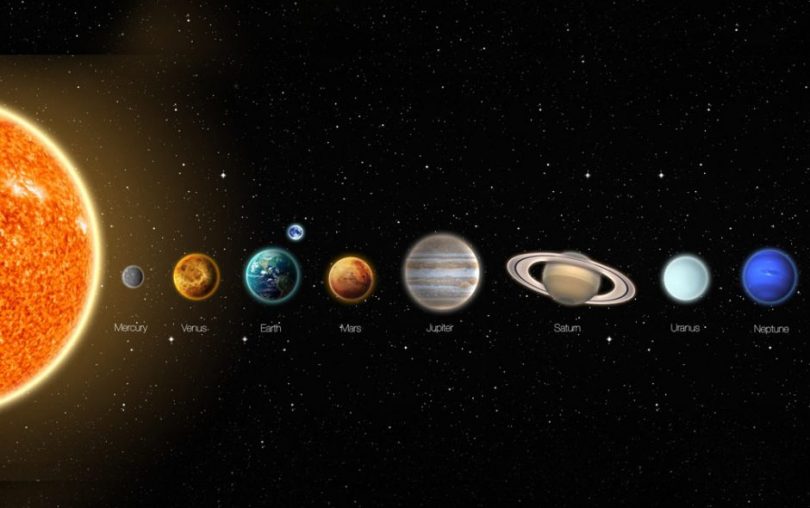Question: When I read articles on present day scientists saying there is life on Mars or human beings trying to land on moon, how do I relate that to material worlds described in Vedas?
Answer by Romapada Swami:Modern science exclusively relies on empiric methods, i.e. what can be observed and experimented with our senses or their extensions. Anything that falls outside the scope of our sense perception is assumed, a priori, to be non-existent (or, more ethically consistent, “We cannot talk about such things, since it lies beyond the purview of verifiable science.”) Thus it confines itself to the study of only that which can be subject to emperic observation and experiment.
Despite rapid advancement in neurology and other such branches, scientists can hardly put their finger on even such commonplace experiences such as intelligence, love, goodwill, faith, sorrow etc – after all it is difficult to explain these in terms of molecular reactions — and therefore such phenomena are largely kept outside the scope of rigorous science! There is no clear consensus as yet amongst scientists even of what exactly constitutes life and what distinguishes a dead body from a living person, beyond the observation of some chemical reactions — not to speak of acknowledging the presence or absence of the subtle body or the soul.
According to Vedic epistemology, the methods for acquiring knowledge are broadly classified under 3 headings: pratyaksa (direct perception, empirical method); anumana (induction i.e. arriving at conclusions using hypothesis, logic and examples), and shabda-pramana (hearing from authoritative sources). The first two of these 3 methods can never lead to conclusive knowledge — even of matter, what to speak of aspects of reality that lie beyond gross matter. As stated before modern science confines itself to these two methods only.
Direct perception is bound to be defective because our senses are limited and imperfect; mechanical extensions of the senses, such as a telescopes, microscopes or the instruments meant to detect life, are also perceived through and built upon the parameters of these defective senses.
The process of hypothesizing is also ever subject to revision. For instance, when one studies the night sky, all one can see are static patterns of light and radiation coming from distant stars. The scientists make some basic assumptions about the characteristics of matter and certain laws it obeys; they then take for granted that the laws prevailing in remote parts of the universe and at remote times are the same as the laws that hold here and now on the earth. Given these laws, they then deduce the nature of object that could have produced the pattern of light or the observed readings. But matter by nature is always under flux, and as newer phenomena and laws are discovered, their theories keep getting revised. Evidently, this ascending method can never lead to perfect, conclusive knowledge. If you want to know your father, the only reliable method is through the verdict of the mother. Any amount of experimentation, however laborious, cannot be conclusive.
Of course, care should be taken to approach the right authority. Blind acceptance of unscrupulous authorities leads to equal havoc and confusion. Therefore, we take conclusive knowledge from the Vedas, because Vedic scriptures are not man-made (apaurusheya) and therefore free from the four defects that all conditioned living beings are subjected to, viz. imperfect senses, tendency to make mistakes, susceptibility to illusion and the propensity to cheat, consciously or subconsciously.
Vedic literatures assert that the universe is filled with life. Such life may or may not be perceivable by our physical senses, or their extensions. Thus, even granting that the astronauts or their instruments visited some place in space, it is no surprise that they could not detect the presence of subtle life forms there or that they could only detect microbial life forms and biological signs, because that is what their instruments are tuned to detect in the first place. What to speak of the moon or mars, even on our own planet there are regions inaccessible to our mundane, three-dimensional perception and yet co-existing with our perceivable realm. These are described in the scriptures, and are accessible to those with proper qualification and refined means of perception.
Vedic knowledge is not dogmatic; it is also scientific i.e. there is room for experimentation and direct verification, provided one is willing to go through the prescribed training and follow standard procedures – much as in any discipline, including modern science. But the scope of modern scientific research is too constricted to explore these aspects of reality. Most lamentably, instead of admitting that they are working merely with sketchy theories and hypothesis, most representatives of science tend to portray a graphic picture of the nature of things as if with absolute certainty. This not only misleads laymen but also serves to shut science off from higher levels of reality.
One final comment: we should not imagine that the sages of ancient India were grossly ignorant of the nature of the world and have constructed some irresponsible fantasy or mythology – as modern anthropologists often portray. Considering the gravity of the subject matter discussed in the Bhagavatam or Bhagavad-gita, these descriptions are certainly worthy of serious attention and scientific study and should not be lightly dismissed, even if one is unable to accept them at face value.







